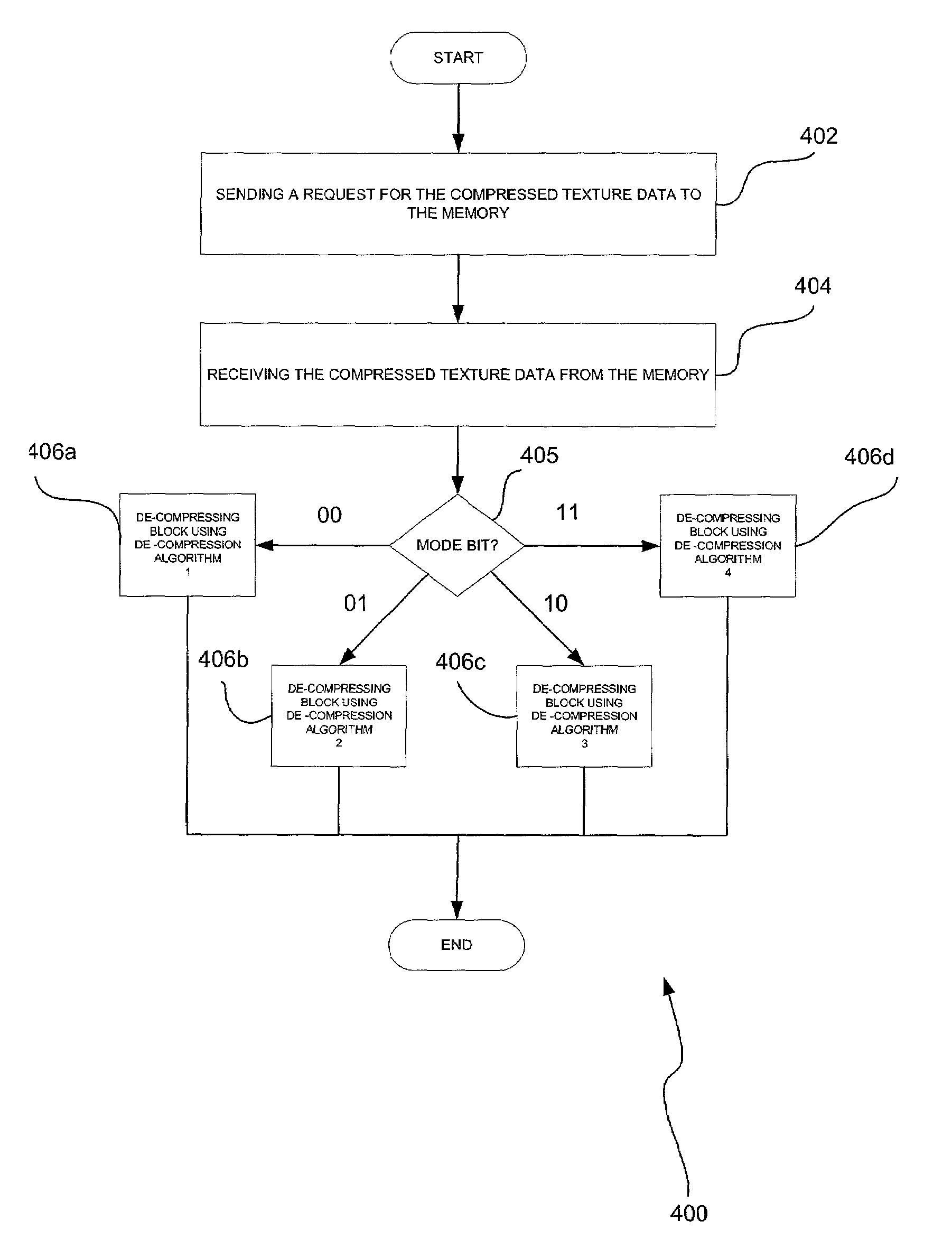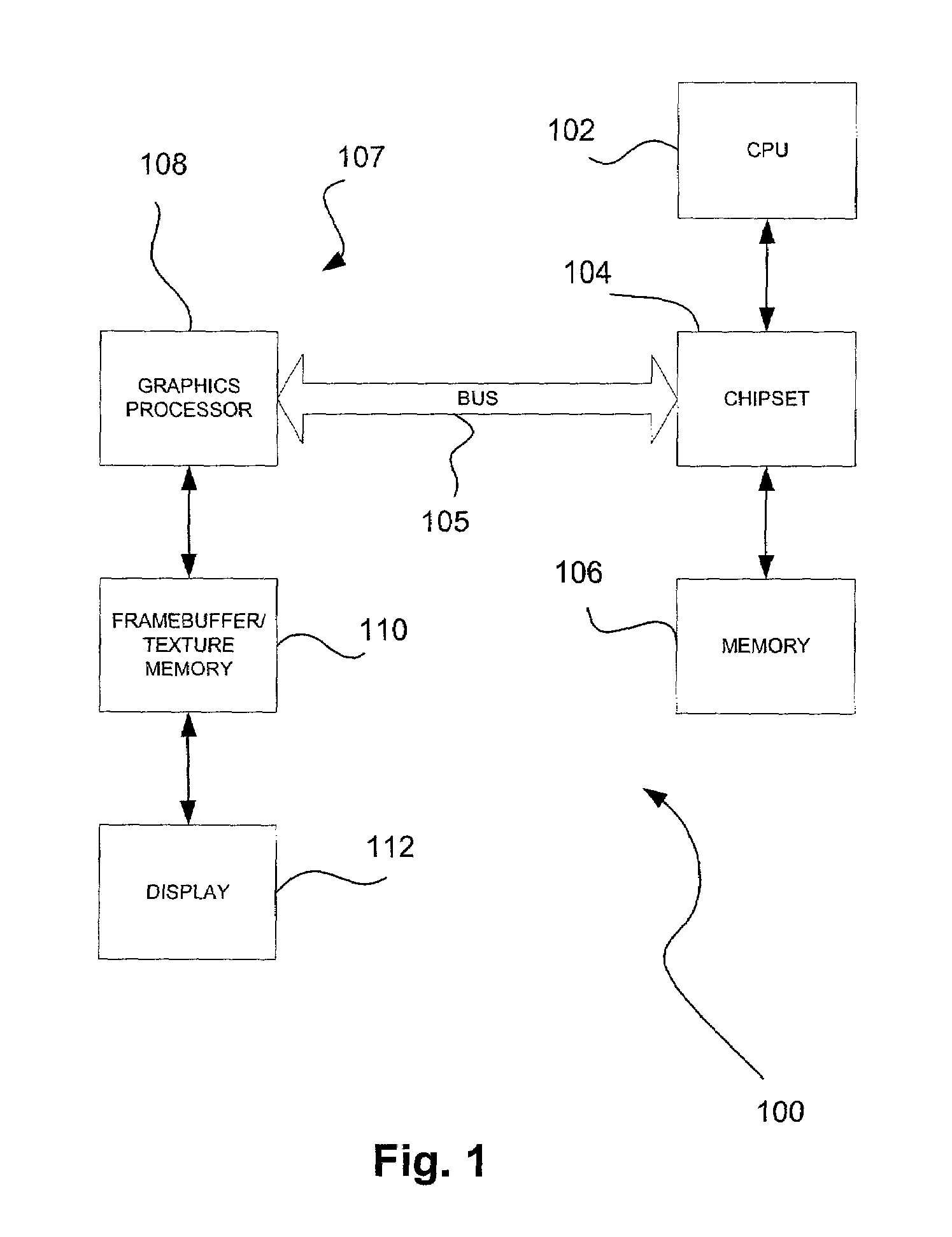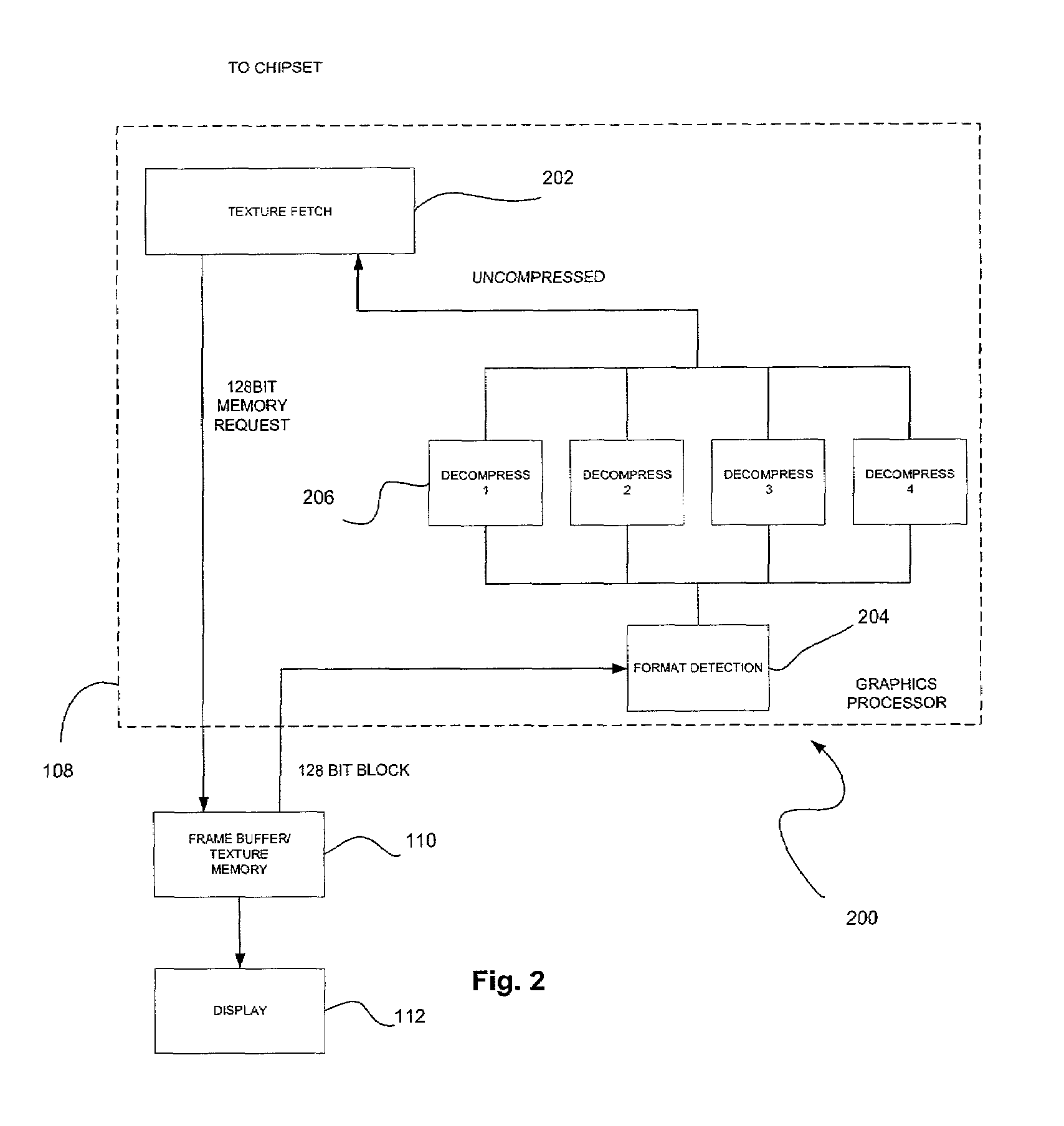Multi-mode texture compression algorithm
a texture compression and multi-mode technology, applied in the field of computer graphics processing, can solve the problems of compression rate, large bandwidth demands on both the system bus and system memory, and become burdensome in terms of memory
- Summary
- Abstract
- Description
- Claims
- Application Information
AI Technical Summary
Benefits of technology
Problems solved by technology
Method used
Image
Examples
Embodiment Construction
[0023]FIG. 1 illustrates an exemplary architecture 100 in which the present embodiment may be implemented. As shown, a central processing unit 102 is coupled to a chipset 104 which is, in turn, coupled to memory 106. In one embodiement, this memory 106 may take the form of an array of one or more dynamic RAM memory chips, or another type of storage device capable of storing data. In use, the memory 106 may be used to store large amounts of compressed texture data in a manner that will soon be set forth. Such compressed texture data is accessible by the chipset 104 under the control of the central processing unit 102.
[0024]Coupled to the chipset 104 via a bus 105 is a graphics subsystem 107 including a graphics processor 108. A frame buffer / texture memory 110 is coupled to the graphics processor 108 for populating a display 112 coupled thereto.
[0025]As will soon become apparent, compressed texture data may be stored in the memory 106, memory associated with the graphics subsystem 107...
PUM
 Login to View More
Login to View More Abstract
Description
Claims
Application Information
 Login to View More
Login to View More - R&D
- Intellectual Property
- Life Sciences
- Materials
- Tech Scout
- Unparalleled Data Quality
- Higher Quality Content
- 60% Fewer Hallucinations
Browse by: Latest US Patents, China's latest patents, Technical Efficacy Thesaurus, Application Domain, Technology Topic, Popular Technical Reports.
© 2025 PatSnap. All rights reserved.Legal|Privacy policy|Modern Slavery Act Transparency Statement|Sitemap|About US| Contact US: help@patsnap.com



